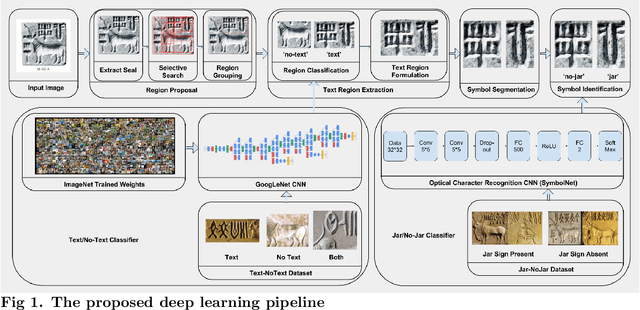Deep Learning the Indus Script
Paper and Code
Feb 02, 2017



Standardized corpora of undeciphered scripts, a necessary starting point for computational epigraphy, requires laborious human effort for their preparation from raw archaeological records. Automating this process through machine learning algorithms can be of significant aid to epigraphical research. Here, we take the first steps in this direction and present a deep learning pipeline that takes as input images of the undeciphered Indus script, as found in archaeological artifacts, and returns as output a string of graphemes, suitable for inclusion in a standard corpus. The image is first decomposed into regions using Selective Search and these regions are classified as containing textual and/or graphical information using a convolutional neural network. Regions classified as potentially containing text are hierarchically merged and trimmed to remove non-textual information. The remaining textual part of the image is segmented using standard image processing techniques to isolate individual graphemes. This set is finally passed to a second convolutional neural network to classify the graphemes, based on a standard corpus. The classifier can identify the presence or absence of the most frequent Indus grapheme, the "jar" sign, with an accuracy of 92%. Our results demonstrate the great potential of deep learning approaches in computational epigraphy and, more generally, in the digital humanities.
 Add to Chrome
Add to Chrome Add to Firefox
Add to Firefox Add to Edge
Add to Edge